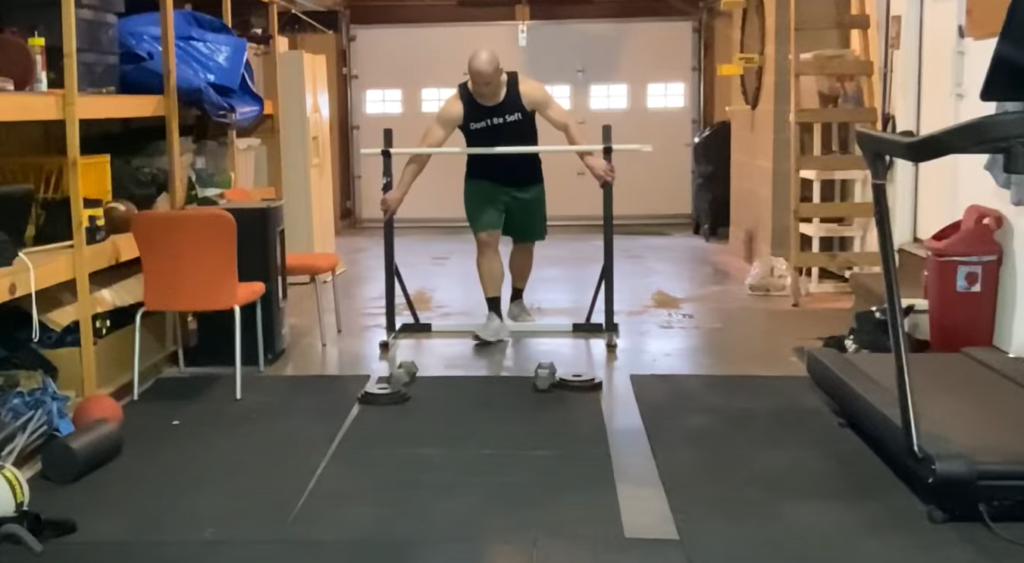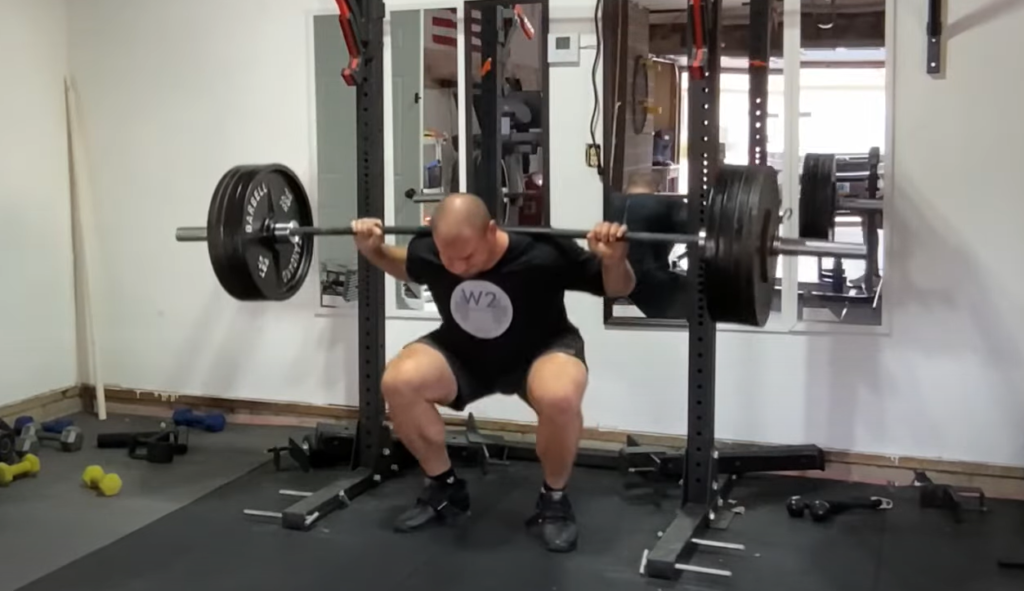Do you want to get fit and then lose all your progress? If not, you need to know about reversibility. This concept is one of the most important in fitness, and it’s something that many people don’t understand. In this article, we will discuss what reversibility is, how it works, and why it’s so important. We will also provide some tips for avoiding reversibility and maintaining your progress!
The Principle of Reversibility in Fitness
The principle of reversibility states that if you stop doing something (like working out), your body will slowly return to its previous state.
This is because your muscles will start to atrophy (shrink), and your fitness level will decrease.
There are a few things that can cause reversibility, but the most common is simply stopping your workout routine. Other causes include injury, illness, or even just a change in schedule that makes it difficult to stick to your usual routine.
The good news is that reversibility is not a permanent condition. If you start exercising again, your body will quickly begin to regain the progress it has lost. In other words, you can always get back in shape! [1]
Causes of Reversibility in Fitness
There are a few things that can lead to reversibility in fitness, but the most common cause is simply taking a break from working out. If you’ve been exercising regularly and then suddenly stop, your body will gradually lose the gains you’ve made over time. This is because when you’re not using your muscles, they atrophy (shrink).
Other causes of reversibility in fitness include:
- Injury: If you get injured and can’t workout for a prolonged period of time, you will start to lose muscle mass.
- Illness: Similar to injury, being sick can also lead to reversibility in fitness if it stops you from working out.
- Age: As you get older, your body naturally starts to lose muscle mass. This is why it’s important to keep exercising as you age in order to maintain your muscle mass and prevent reversibility. [2]
Tips to Prevent Reversibility in Fitness
Now that you know what can cause reversibility in fitness, here are a few tips to prevent it:
- Don’t take long breaks from working out
- Stay active
- Eat a healthy diet
- Use resistance training
Effects of Reversibility in Fitness
There are many potential effects of reversibility in fitness. Some of these effects are positive, while others are negative. It is important to understand all of the possible effects before making any decisions about whether or not to participate in a fitness program.
Positive Effects
- improved cardiovascular health
- improved muscular strength
- improved joint function
- increased bone density
- improved coordination and balance
- improved posture
- improved mental health
- increased energy levels
- improved sleep quality
- weight loss
- reduced risk of chronic diseases such as heart disease, stroke, cancer, and diabetes
Negative Effects
- overuse injuries
- burnout
- boredom
- financial cost
- time commitment
- weather dependency
- social isolation
- body image issues
- eating disorders
- performance enhancing drug use [3]

It is important to remember that not everyone will experience all of the effects listed above. The effects that an individual experiences will depend on many factors, including their age, health status, lifestyle, and genetics.
If you experience any negative effects, such as pain or fatigue, it is important to speak with your doctor. They can help you to modify your program or make other changes to ensure that you are able to safely and effectively meet your fitness goals. [4]
FAQ
What is reversibility in fitness training?
Reversibility in fitness training refers to the loss of adaptations that occur after a person stops their training program. In other words, it is the deterioration of physical performance that happens when someone becomes deconditioned. This is because the body is constantly adapting to the stresses placed on it, and when those stresses are removed (i.e. when someone stops working out), the adaptations are no longer needed and they are gradually lost.
There are two types of reversibility: functional and structural. Functional reversibility refers to the loss of fitness-related changes that occur on a cellular level, such as reduced blood flow to muscles and decreased mitochondria activity. Structural reversibility, on the other hand, refers to the loss of muscle mass and strength. Both types of reversibility can occur after just a few days of inactivity, which is why it’s so important to stay consistent with your workouts!
What is an example of the reversibility principle?
In wellness, the reversibility principle is often applied to physical activity. This means that if you stop being physically active, your body will slowly revert back to its original state. For example, if you used to be a runner but then stopped running for several years, your body would gradually lose the muscle tone and endurance that it built up from running. The same is true of other types of physical activity, such as strength training. If you stop lifting weights or doing other types of resistance training, your muscles will gradually become smaller and weaker. The principle of reversibility also applies to other aspects of wellness, such as nutrition and stress management. If you stop eating a healthy diet or stop practicing stress-relieving techniques like meditation, your body will slowly revert back to its original state.
What is the definition of the principle of reversibility?
The principle of reversibility in fitness states that if you stop exercising, your body will gradually return to its pre-exercise state. This is because when you exercise, your body adapts to the new physical demands placed on it. However, if you stop exercising, these adaptations will gradually reverse themselves.
What happens during reversibility?
Reversibility is the term used to describe what happens when you stop exercising. If you’ve been working out regularly, you’ve probably noticed that it takes less effort to do the same activities as time goes on. This is because your body becomes more efficient at using oxygen and energy to fuel your muscles during exercise.

When you stop exercising, your body’s ability to use oxygen and energy decreases, and your muscles begin to lose their endurance and strength.
Functional reversibility refers to the changes in your body that occur when you stop exercising. These changes are usually temporary and can be reversed with regular exercise. Structural reversibility refers to the changes in your body that occur when you stop exercising and don’t resume regular exercise. These changes are usually permanent.Which statement best describes the principle of reversibility?
The principle of reversibility states that if you stop exercising, your fitness level will decrease. However, if you start exercising again, you can regain your previous level of fitness.This is one of the key principles to understand when it comes to fitness. It’s important to realize that your fitness level is not set in stone. If you stop working out, you will lose the progress you’ve made. However, if you start working out again, you can quickly regain your previous level of fitness.
Why is reversibility important in fitness?
Reversibility is important in fitness because it allows you to maintain your progress and avoid injury. If you don’t keep up with your workouts, your body will slowly start to revert back to its previous state. This can lead to weight gain, muscle loss, and a decrease in overall fitness level. Additionally, if you stop working out altogether, you may experience a loss of bone density and an increased risk of injuries.
How does the principle of reversibility affect the exercise?
The principle of reversibility dictates that the body will only adapt to the stresses placed on it. If you stop exercising, your body will eventually return to its previous state. This is why it’s so important to keep up with your workouts even when you don’t feel like it.
If you’re trying to build muscle, for example, you need to consistently lift heavy weights and eat a nutritious diet. If you stop lifting weights or eating right, your body will begin to lose muscle mass. The same is true for endurance training. If you stop running or biking, your body will slowly lose its endurance and you’ll have to start from scratch if you want to get back in shape. The principle of reversibility also applies to fitness programs. If you start a new workout routine and then stop, your body will quickly revert back to its previous state. This is why it’s so important to stick with a program even when you’re not seeing results right away.
How long until reversibility occurs?
The time it takes for reversibility to occur depends on how long and how consistently you have been working out. If you have only recently started working out, then you can expect reversibility to happen relatively quickly. However, if you have been working out for a long time, then reversibility may take longer to occur.
Useful Video: Principles of Training | Fitness Training & Programming
Conclusion
Reversibility in fitness is the ability to regain or improve upon previous levels of fitness after a period of inactivity. It’s an important concept to understand because it has implications for both athletes and non-athletes alike. Those who are training for a specific event or goal should be aware that their hard-earned progress can quickly be lost if they take too much time off from training.
Whether you’re an athlete or simply looking to get back into shape, it’s important to understand the concept of reversibility in fitness. With a little knowledge and effort, you can make sure that your progress is never lost for long.
References:
- https://refitthebar.com/principle-of-reversibility/
- https://study.com/academy/lesson/reversibility-principle-in-sports-training-definition-example.html
- https://badmintonscholar.com/blogs/600713092eb63f0004e87764
- https://pdhpe.net/factors-affecting-performance/how-does-training-affect-performance/principles-of-training/reversibility/










Leave a Review